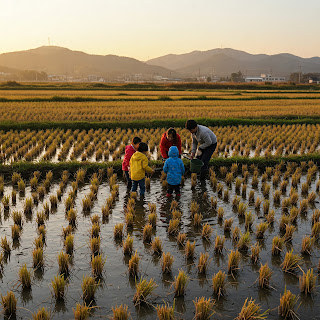Search This Blog
Hello! I am Henry Jeon, a marketing expert who is making innovation happen in Korea.
I specialize in creating innovative marketing campaigns that resonate with audiences and drive tangible results.
Posts
Tech's Shadow, Human Spirit & the Solace of a Drink: Navigating the Digital Age
- Get link
- X
- Other Apps
The taste and nutrition of autumn, loach chueotang
- Get link
- X
- Other Apps
Fragrant rice thief! Perilla leaf salad recipe and delicious story hidden in the name
- Get link
- X
- Other Apps
Let's get rid of the fat accumulated during the winter with a spring diet!
- Get link
- X
- Other Apps
Artificial Intelligence (AI) as a Main Character
- Get link
- X
- Other Apps
Red and White Cloud Cheonwansan (Mountain)
- Get link
- X
- Other Apps
Various Risk Factors in Food Companies
- Get link
- X
- Other Apps









